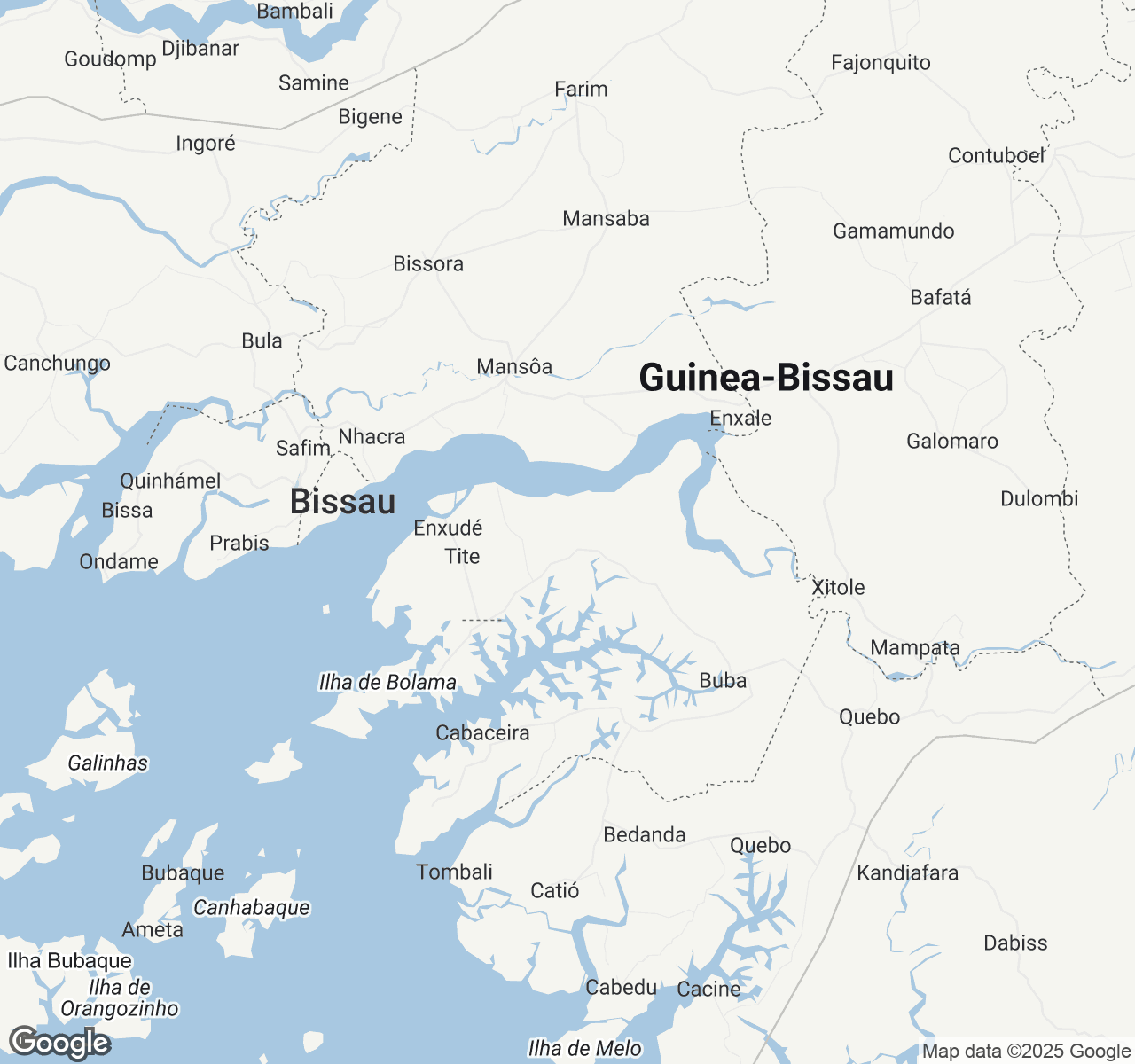
Things to Do in Guinea-Bissau
Discover the best of Guinea-Bissau
Plan Your Trip
Essential guides for timing and budgeting
Top Things to Do in Guinea-Bissau
Discover the best activities and experiences. Book now with our trusted partners and enjoy hassle-free adventures.
Your Guide to Guinea-Bissau
About Guinea-Bissau
Where the Atlantic Ocean whispers secrets to pristine beaches and time moves to the gentle rhythm of traditional drums, Guinea-Bissau reveals itself as West Africa's best-kept secret. This small nation pulses with the heartbeat of the Bijagós Archipelago, where sacred islands drift in turquoise waters and ancient animist traditions dance alongside Portuguese colonial echoes. In bustling Bissau markets, the aroma of cashew wine mingles with fresh fish as vendors speak in melodic Crioulo, their voices weaving stories of resilience and joy. Mangrove forests stretch like green cathedrals along winding rivers, sheltering hippos and countless bird species in their emerald embrace. Here, every sunset paints the sky in brilliant oranges and purples while fishing boats return with the day's catch, their silhouettes creating poetry against the horizon. Guinea-Bissau invites travelers to slow down, to savor cashew nuts straight from the tree, and to discover a land where community bonds run deep and every smile tells a story of enduring spirit.
Travel Tips
Transportation: Rely on shared taxis (tocas) and mini-buses for city transport in Bissau. For island-hopping in the Bijagós, charter dugout canoes or small boats through local guides. Roads outside the capital can be challenging during rainy season, so plan accordingly.
Money: Bring euros in cash as the West African CFA franc is pegged to it. ATMs are scarce and unreliable outside Bissau. Exchange money at banks or authorized dealers, and always carry small denominations for markets and transportation.
Cultural Respect: Greet with handshakes and ask permission before photographing people. Dress modestly when visiting villages or religious sites. Show respect for animist traditions in the Bijagós islands, where certain areas may be considered sacred by local communities.
Food Safety: Enjoy fresh seafood at coastal restaurants but ensure it's thoroughly cooked. Try local specialties like jollof rice and cashew fruit juice from reputable establishments. Stick to bottled or boiled water and avoid raw vegetables in rural areas.
When to Visit
Guinea-Bissau's dry season (November to May) offers the most comfortable travel conditions with temperatures ranging from 24-32°C and minimal rainfall. December through February represents peak season with accommodation prices 25-40% higher, but roads are accessible and wildlife viewing is optimal. March to May brings increasing heat (up to 35°C) but fewer crowds and reduced prices. The rainy season (June to October) transforms the landscape into lush green great destination, though heavy downpours (200-300mm monthly) can disrupt transportation. July and August see the heaviest rains but offer 30-50% lower accommodation rates. For cultural enthusiasts, visit during Carnival season (February/March) or the Bijagós sacred ceremonies (varies by lunar calendar). Bird watchers should target November to March when Palearctic migrants arrive. Budget travelers benefit from June to September's dramatic price drops, while luxury seekers should book December to February despite higher costs. The shoulder months of November and May provide the best balance of pleasant weather, moderate prices, and manageable crowds, making them ideal for first-time visitors seeking real feels without extreme weather challenges.

Guinea-Bissau location map